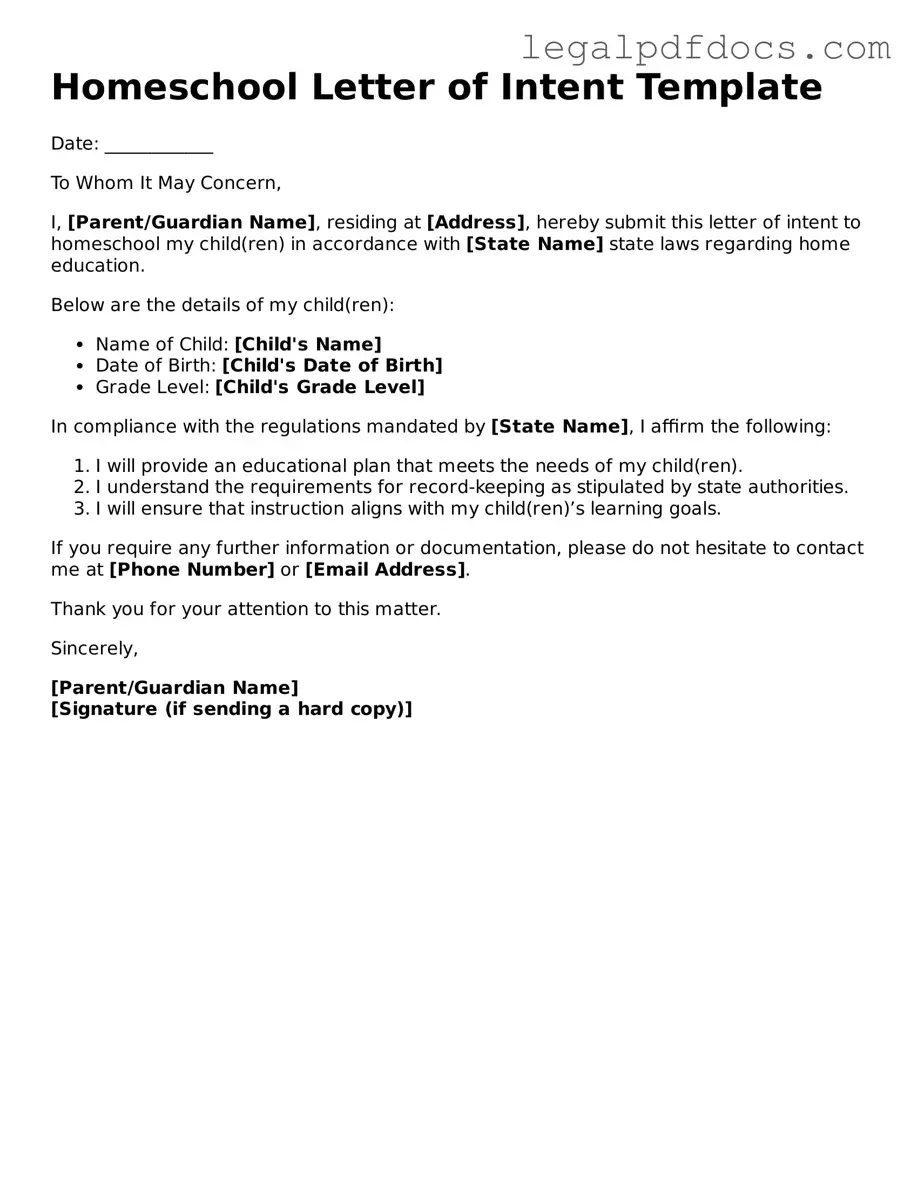Homeschool Letter of Intent Template
The Homeschool Letter of Intent form is a crucial document that notifies your local school district of your intention to homeschool your child. This form serves as an official declaration, ensuring compliance with state education laws and regulations. To take the first step in your homeschooling journey, fill out the form by clicking the button below.
Open Homeschool Letter of Intent Editor Here
